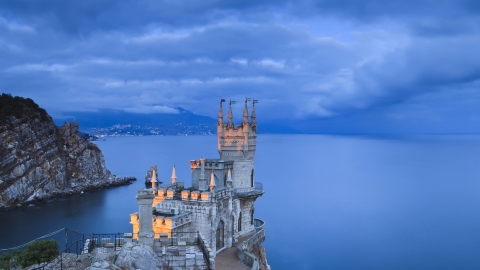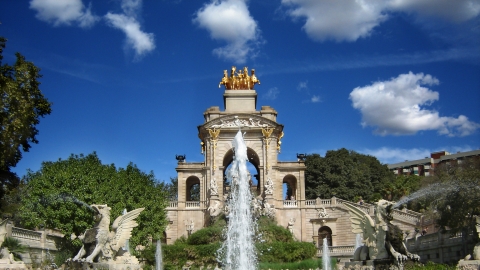Recent research has shown that the climate crisis has been affecting the world for decades, yet the responses to it have been disappointing. However, politicians have been focusing more on the climate crisis in parallel with reports of rising global average temperatures. According to the 2019 United Nations Environment Report, there have been protests and protests not only by citizens but also by artists around the world.
In this way, climate warnings have been made through art works that aim to educate people about climate issues by depicting the current and future stages of climate crisis. Initiatives such as ART 2030 (a non-profit organization that works to promote the UN’s sustainable development goals through art) address the climate crisis through artistic means and this is crucial in providing information about climate conditions in the best way to reach the public at large.
Through temporary measures in buildings or public spaces, artworks are created in different ways to spread a pre-determined message. Here are six artworks installed in squares, parks or buildings to warn about the global climate crisis:
For FOREST - The Unending Attraction of Nature / Klaus Littmann
(Temporary translation: For the forest - The endless attraction of nature)

To raise awareness about climate change and the damage caused by deforestation, Littmann installed 300 different species of trees at the Wörthersee Stadium in Klagenfurt, Austria, and will replant them around the stadium after the installation. The work, inspired by a painting by Austrian artist Max Peintner, serves as a warning that we will one day have to admire nature like animals in a zoo.
TOTEMY / Alicja Biala e Iwo Borkowicz

The sculptures were installed on the ground floor of the MVRDV-designed Baltyk building in Poznań, Poland. Each form and shape of the work embodies statistical research on the environment. The abstract forms can be explored by referring to QR codes printed on each sculpture. According to architect Iwo Burkowicz, the idea of the project was to be expressive, but also objective and realistic.
RAMPANTE / Wellington Cançado, Renata Marquez, Tande Campos
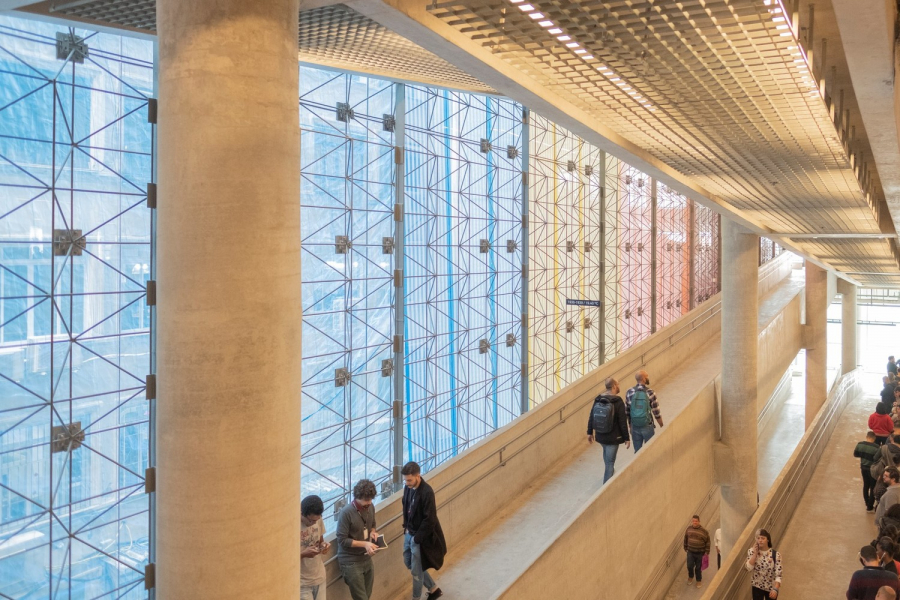
The project, located in the facade of Sesc 24 de Maio, within the 12th São Paulo Architecture Frontier, has served as the basis for the “Warming Stripes” chart, which shows through colored lines the climate change in Brazil from 1901 to 2018. Data related to the average temperature change of the city of São Paulo was added to this initial study to create a chart that adapted to the building’s dimensions and harmonized with the available colors. According to the designers: “The further we move away from the Earth, the hotter the air becomes and the more critical our existence becomes, as well as that of other creatures on the planet.”
Ice Watch / Studio Olafur Eliasson
(Rough translation: Ice clock)

Arranged in an outdoor circle, twelve ice blocks from Greenland represent the twelve hands of a clock in artist Olafur Eliasson’s installation. The work seeks to raise awareness of climate change by bringing the public directly into contact with the phenomenon of continuous ice melting, emphasizing the issue of time in the process. The project was first staged in Copenhagen in 2014 and in the following years, the work has been installed in Paris and London.
Support / Lorenzo Quinn
(Translation: Support)
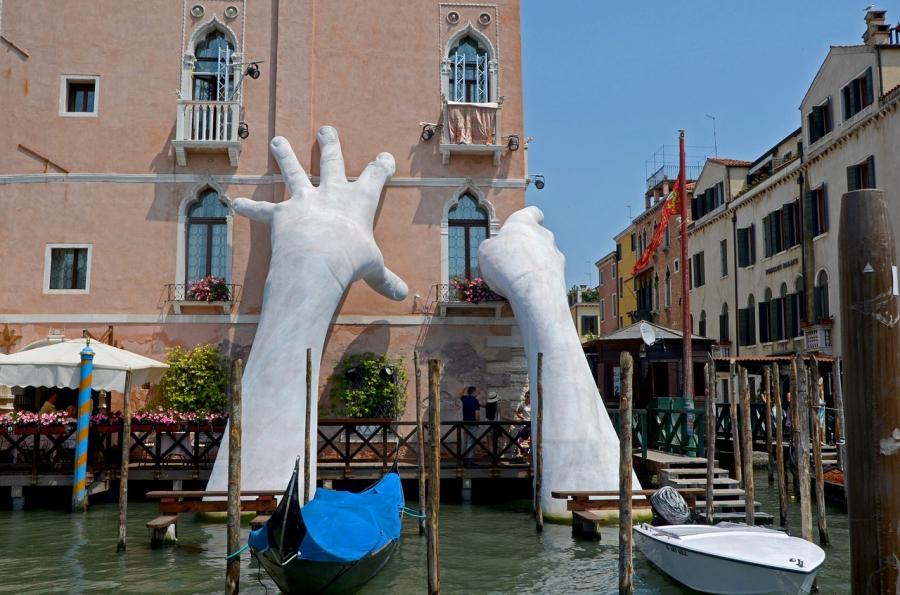
Lorenzo Quinn’s sculpture at the 2017 Venice Art Biennale represents two hands emerging from the Grand Canal, located in the Ca’Sagredo Hotel. The hands appear to be holding onto a building surrounded by water, a warning about the climate crisis and the vulnerability and fragility of the built environment in the face of it. The sculpture’s symbolism relates not only to the destruction of nature by human action, but also to the possibility of humans responding to and intervening in this scenario.
Breathe with me / Jeppe Hein e ART 2030
(Rough translation: Breathe together)
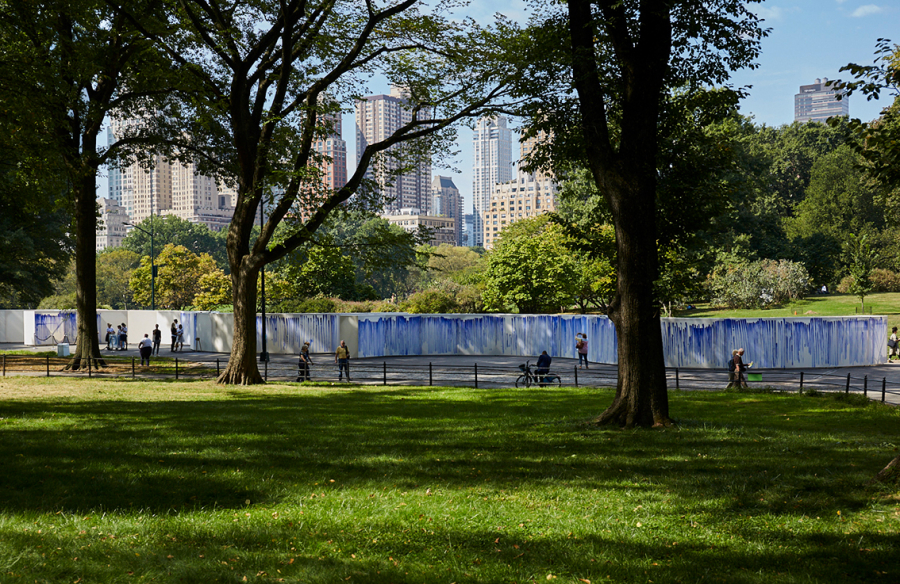
The installation, unveiled at the United Nations headquarters in New York, was part of ART 2030 during the 74th session of the United Nations General Assembly. The installation, also located in Central Park, invites the public to join a collective effort to tackle air pollution. In two breaths, each participant makes two strokes from top to bottom (one stroke for each breath) in a curved white panel. The project reflects the potential of collective and community action, and warns that the air we breathe is part of the climate and the world we share.



























